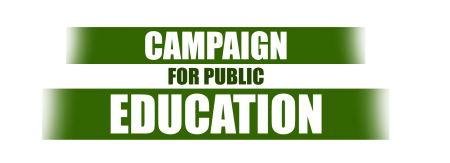Scrambling over school closures
Toronto Star May 16, 2008 Carol Goar
We knew this was coming. School enrolment is one of the few areas of public policy that is reasonably predictable.
Demographers told us the number of children in Canada's elementary schools would start dropping in 1999. The downswing would hit high schools in 2006.
We've had time to think, plan and prepare. We've even had experience. In the mid-1970s, schools started emptying, as the baby boom generation moved into adulthood.
Yet once again, we're scrambling, making hasty choices, facing bitter fights over school closures.
The issue was barely mentioned in last fall's election, although education is the province's second largest expenditure.
The Toronto District School Board hasn't closed a single school since 2001, although enrolment has decreased by 10.5 per cent.
The good news is that the board finally has a chair, John Campbell, who is willing to face the challenge head-on and capable of doing it in a nonconfrontational way.
The bad news is that none of the province's 72 publicly funded schools boards has the tools to make the best use of the real estate owned by Ontario taxpayers.
They can sell off half-empty schools, but they can't explore better alternatives. They can't convert them into community centres in inner-city neighbourhoods. They can't use them as immigrant reception and job training facilities. They can't turn them into public health clinics. They can't even salvage their libraries, computer labs, machine shops, swimming pools, basketball courts and kitchens.
"Schools are not part of urban planning at all," says Annie Kidder, executive director of the parents' group, People for Education. "These are public assets. We need to think of them in terms of green space, poverty reduction and strong neighbourhoods."
Her group has been trying to sound the alarm since 2003. Its members watched in frustration as a clash over religious schools pushed everything else to the margins of the 2007 election campaign. Six months later, People for Education issued an urgent call for a public debate.
"Sometimes you have to close schools," Kidder acknowledges. "But you have to think about the implications beyond the education system. You have to ask what the community needs."
School boards can't do that for three reasons:
They're bound by a rigid per-student funding formula that forces them to cut programs and staff as a school's enrolment declines. Even if a small school is a community hub, trustees have little choice but to close it.
They get their money and authority from the ministry of education, which has no mandate to deal with municipal affairs, public health, immigration or sports and recreation. Until the province recognizes the folly of putting public responsibilities into airtight boxes, underused schools will continue to be treated as redundant property.
They're not getting much help from Queen's Park. Education Minister Kathleen Wynne has a "working group" looking at the issue of declining enrolment. (That should have happened five years ago, when her predecessor, Gerard Kennedy, imposed a moratorium on school closings.) Premier Dalton McGuinty has urged trustees to "use their precious resources in a way that best meets the need of their students." (That would be fine if schools had no value other than delivering classroom education and newly trained teachers weren't seeking a career in a shrinking job pool.)
Even with the best planning and most thorough debate, closing schools is painful.
Parents don't want to put their children on a bus to ride across town to a large, impersonal institution. Kids don't want to lose their favourite teachers or be separated from their friends. A case can be made that every school has something worth preserving: its history, its design, its artwork, its playground.
The Toronto District School Board is proceeding the right way. It has a long-term plan. It has realistic benchmarks. And it is willing to be as flexible as possible.
But it can only distribute the pain equitably.
We need a government that makes it possible to turn crises into opportunities.

